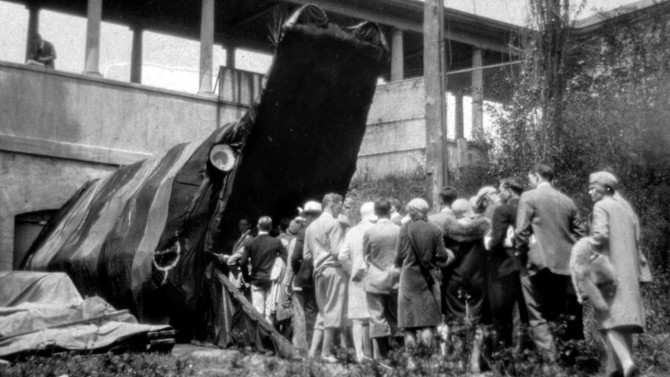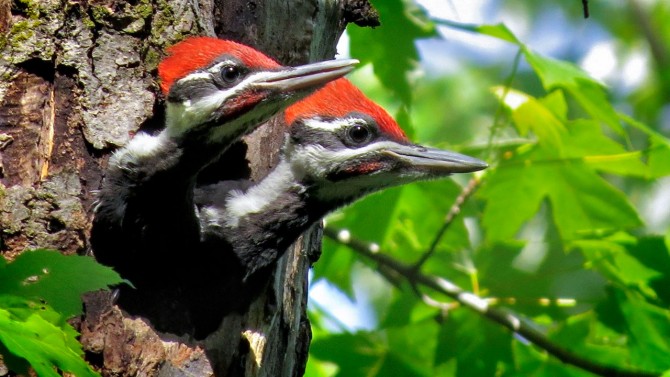“Cosmos” by Leo Villareal, running night and day at the Johnson Museum over the Mallin Sculpture Court, is visible from off-campus locations.
(Virtual) Things to Do, March 27-April 10
By Daniel Aloi
NOTE: During this challenging time of social distancing and university life interrupted by the ongoing coronavirus (COVID-19) outbreak, the Chronicle is offering a virtual Things to Do, providing a variety of opportunities to engage with Cornell resources and programming. See the University Events Calendar for updates.
Stay connected
Staff members are invited to stay connected and support one another from their virtual and home offices in Connected Cornell: A Community Chat for Staff, April 3 from 11 a.m. to noon.
Part of an ongoing series of resource webinars for staff, the conversation on Zoom is capped at 51 participants. The hourlong session will be facilitated by Jennifer Fonseca and Ari Mack, organizational and workplace development consultants in the Division of Human Resources.
During the discussion, staff members can share how they are at that moment, what challenges are coming up for them, and the creative practices supporting their work, team, home life and community.
Virtual story hours
The Cornell Child Care Center invites young children and their families to join in a virtual story hour with teachers, Monday through Friday from 10-11 a.m.
During the first half-hour, book selections will be geared to infants and toddlers; the second half-hour is intended for preschool and young elementary school students. Join on Zoom; no registration is required and participants can drop in and out as desired.
The story hours are limited to 300 participants and are sponsored by Cornell Work/Life and Bright Horizons. Contact worklife@cornell.edu with any questions.
Dragon Day history
The streets around Rand Hall, Milstein Hall and the Foundry at the College of Architecture, Art and Planning (AAP) are conspicuously empty today.
Dragon Day is a rite of spring at Cornell and also a traditional rite of passage for first-year architecture students and an outlet for their creative energy. As a collaborative project for the entire class, it fosters teamwork and pride in their college and major; and is an exercise in professional skill-building for designers, builders and makers.
Dragon Day 2020 was scheduled to take place March 27. Cornellians can honor this campus tradition going back to 1901 and dig into the spectacle of Dragon Days past.
Peruse a gallery of videos of Dragon Day Parades across the campus, and a slideshow of images from the event over the years, featuring fanciful dragons, phoenixes created by engineering students to challenge the dragon, a unicorn fielded by physics students and a multitude of creative costumes and props.
See AAP’s Dragon Day page for the history of the event, and links to more content, including Chronicle coverage.
12,000 points of light
The galleries of the Herbert F. Johnson Museum of Art may be temporarily closed to visitors, but one piece of public art there continues to provide endless enjoyment – “Cosmos,” the light installation by artist Leo Villareal. Running day and night on the ceiling of the museum’s Mallin Sculpture Court, the installation is visible from many off-campus locations.
“Cosmos” is an ever-changing array of almost 12,000 LEDs, with complex patterns generated by a custom algorithm in computer software designed by Villareal. Installed in 2012, the work is titled in homage to the late Cornell astronomy professor Carl Sagan, who co-created the 1980 PBS series “Cosmos: A Personal Voyage.”
The museum also is celebrating Women’s History Month and women artists in the permanent collection via a series of Instagram posts. In conjunction with two new installations planned for 2020, the Johnson joins museums and nonprofit institutions nationwide this year in positioning art as a catalyst for discourse and civic engagement under the collective banner of the Feminist Art Coalition; and honors the centennial of the passage of the 19th Amendment, which gave women the right to vote.
The Johnson’s eMuseum site offers a searchable visual database of its collection of more than 35,000 works. See the museum’s visitor updates for more information or status changes.
Use your editing skills
Cornellians can make a significant contribution to public knowledge in just a few minutes by taking part in the fifth Wikipedia Art + Feminism Edit-a-thon, through March 31.
As part of the monthlong initiative, volunteer editors turned out March 6 to Olin Library and remotely to create new pages and edit others. Volunteers added and improved content on notable women, artists and various art and feminism topics, including articles with Cornell and regional connections.
New pages that emerged from that session included articles on Latvian-born artist and preservationist (and local resident) Victoria Romanoff, and suffragist and Cornell librarian Edith Anna Ellis, Class of 1890. Many more were improved and added to, including the entry for President Martha E. Pollack.
See the Cornell editing project dashboard for more, and consider adding to the effort.
The international project began as an annual event in 2014 to improve Wikipedia’s overall content and gender balance. Cornell has participated since 2016.
Citizen science: Breeding Bird Atlas
You can enjoy the soothing benefits of nature and take an opportunity to survey the birds you see on a walk in the woods or a park, and contribute to the third New York State Breeding Bird Atlas.
An important way to assess how birds in New York are faring and gather valuable data for conservation efforts, the survey is now underway and bird-watchers can join the effort.
During the next five years, volunteers will gather information for scientists in their efforts to determine what has changed for New York’s breeding birds since the first survey in the 1980s. For the first time, participants can record their observations online through a special portal in the eBird program run by the Cornell Lab of Ornithology.
The atlas is designed to determine when and where the state’s nearly 250 species of birds are breeding. Volunteers record all the breeding species they observe in each atlas “block,” roughly a 3-by-3-mile area. There are 5,710 blocks in the state.
“Data entry is easy. Anyone can create a free eBird account and submit data online through the site or with the eBird mobile app,” said Ian Davies, eBird project leader.
Anyone can participate, even those who only know a few backyard birds. To get started, see the Atlas Essentials page.
Save the dates
While the Department of Performing and Media Arts (PMA) has canceled its on-campus events for the remainder of the spring 2020 semester, some have been postponed until fall.
April performances by eTRASH Lab have been rescheduled for Oct. 29-31, along with events in a related workshop and discussion series; and “Much Ado about Nothing” will be performed Nov. 13-14 and 20-21.
Selected student films from the seventh annual Centrally Isolated Film Festival will be screened online later this spring. Follow PMA on social media (Facebook, Twitter or Instagram) or visit pma.cornell.edu for updated information.
Meanwhile, all interested Cornell students (graduate and undergraduate) are welcome to submit essays on theater or performance for the annual Marvin Carlson Award, and short plays on the theme of fabrication for the eighth annual 10-Minute Play Festival, Oct. 1-3. Deadlines for both have been extended to Friday, April 10 at 4 p.m.
Media Contact
Get Cornell news delivered right to your inbox.
Subscribe


